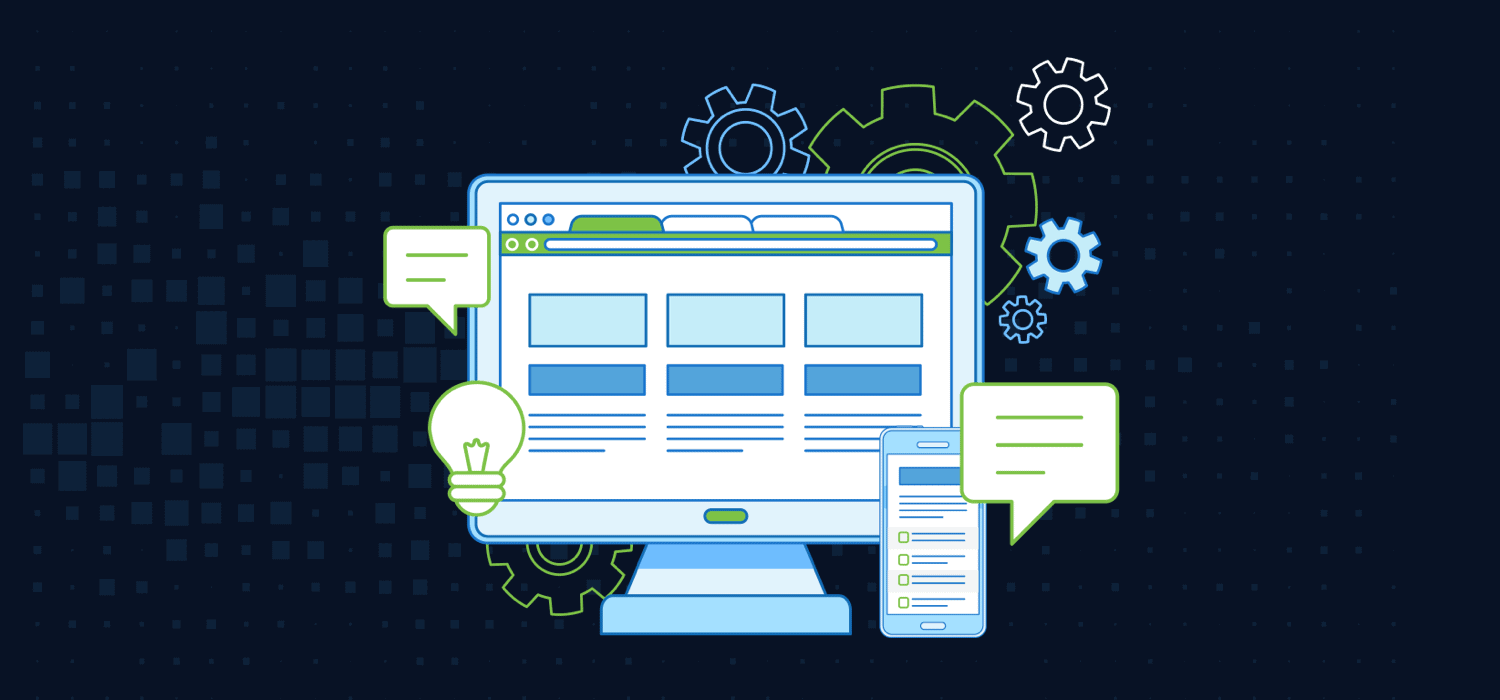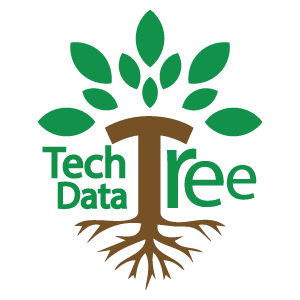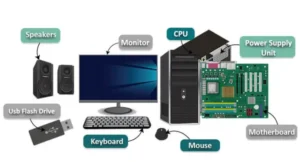Businesses today require smart tools to keep up. Standard software is one such tool. It’s like buying a cake rather than making one. This software is ready for use right away. It saves both time and money.
Digital transformation has become critical for all businesses. Business software solutions enable to complete tasks more quickly. The correct technological investment can make a significant difference.
Many people find off-the-shelf solutions to be a good choice. They help to improve regular tasks without incurring large fees. Software innovation continues to improve tools for organizations of all sizes.
What is Off-the-Shelf Software?

Off-the-shelf software is designed for quick use. It works right away once you purchase it. There is no requirement for special building or coding.
Simple Definition
Off-the-shelf software is ready to use immediately. It is also known as Commercial Off The Shelf (COTS) software. These pre-built applications work similarly to purchasing a clothing from a store. You don’t have to make it yourself.
Readymade software saves time. It enables enterprises to get started rapidly. It was created with the many different types users in mind.As a result, it can benefit a wide range of businesses.
Pre-built applications come with instructions. You can set them up fast. Many businesses choose COTS software because it’s easy. They don’t need special computer experts to make it work.
Examples of Off-the-Shelf Software

Many of the programs you use every day are off-the-shelf. These ready-made tools aid with a variety of activities. Let us look at some common cases.
CRM Tools
CRM software enables organizations to better serve their customers. It stores all client data in one spot. Google and the Zoho Customer are popular platforms.
These tools remember what each customer prefers. They also show the things buyers previously purchased. CRM software promotes greater cooperation among sales teams.
Many CRM tools have client portals. These are specific websites that allow customers to log in. Customers can view their orders and request assistance through these portals. This helps the customer feel important and cherished.
Accounting Software
Accounting software helps firms maintain track of their finances. QuickBooks and Xero are popular options. They count the money that comes in and goes out.
These tools ensure that organizations follow financial regulatory compliance regulations. That is, they assist businesses in complying with financial regulations. Breaking these laws may result in significant fines.
Accounting software also creates audit trails. These are the documents that prove who did what with the money. Audit trails help to identify errors. They also demonstrate when someone is stealing money they shouldn’t.
Good accounting software saves time. It does math swiftly. It also generates attractive reports that demonstrate how the firm is performing.
ERP Systems
ERP systems function similarly to large business control centers. ERP stands for Enterprise Resource Planning. Famous programs include SAP and Oracle.
These systems link all aspects of a firm together. They help with inventory tracking at the office.They process consumer orders swiftly. They even manage personnel data
ERP systems allow information to flow smoothly across departments. Workers can immediately see what they need. Managers can make better, faster judgments.
Companies that use ERP systems save time and money. They do not need to use several separate programs. An ERP system will perform a number of several tools.
Project Management Tools
Project management tools help teams complete tasks on schedule. People may see who is doing each job using programs such as Asana and Trello. They indicate when chores need to be completed.
These tools enable workflow optimization. This means that work flows easily from one person to the next. Nobody waits too long for their chance to help.
Project management tools consolidate all information in one location. Team members can see updates immediately . They can also provide feedback and ask questions.
These programs give out reminders regarding due dates. They also show what jobs are most important. This allows teams to select the right tasks.
Productivity Suites
Work suites are collections of useful computer apps Microsoft Office a year and the use of Google Workspace are typical examples. They feature lots of tools that are useful with others.
These suites contain document-writing programs. They also provide files for working with numbers. Email programs allow people to send messages rapidly.
Businesses use these tools on a daily basis. They help employees complete more work in less time. This increases business efficiency throughout the organization.
Productivity suites allow many people to work on one single file. Team members can witness the changes straight away. This facilitates working together.
E-commerce Platforms
E-commerce platforms enable enterprises to sell products online. Shopify and Shopify are popular options. Platform selection is critical for success in online sales.
These are SaaS programs, which implies they operate over the internet. You don’t have to install as big devices on your computer. You can use these from any location with an internet connection.
E-commerce systems provide a wide range of functions. They present items in a nice way. They accept money safely. They also assist with client inquiries.
Using these tools, you may quickly set up an online business. Even modest firms may appear professional. They may begin providing goods to customers all around the world quickly.
Pros and Cons of Off-the-Shelf Software

Off-the-shelf software has both advantages and disadvantages. Let’s look at what makes it useful. We’ll also look at situations it may not work properly.
Advantages of Off-the-Shelf Software
Prepared software saves both time and money. You can start utilizing it immediately. These programs have been properly tested. They make things easy for businesses of all sizes.
Lower Initial Cost
Ready-made software is less expensive at the outset. This makes it an affordable software option for many enterprises. You do not need to hire a team to construct it from beginning. Companies can choose how they want to pay. Some provide one-time payments, which means you only have to buy it once. Others offer subscription-based software, which you can pay for monthly or annually. This helps firms better manage their finances. This solution is particularly appealing to small businesses with limited resources. They can buy decent tools for a reasonable price. When you purchase the software, it begins to work immediately. This benefits all parties involved by saving time and money.
Quick Setup and Deployment
Off-the-shelf software is ready to use immediately Rapid deployment software saves businesses an important amount of time.You don’t need to wait months for someone to construct it. The software vendor has already done all the hard work. Application deployment can take days or even hours. This implies that everyone on the team can start using it right away. Businesses embrace this because it allows them to solve problems faster. You are unable to pay specialized expertise to set it up. The creators provide simple procedures to follow. This enables businesses of all sizes to quickly implement operational systems.
Ongoing Vendor Support & Updates
Software businesses assist you once you purchase their solutions. This software support from vendors is really critical. They fix problems as they arise. They answer queries when you are stuck. Regular updates keep your programs safe from malicious users online. Technical assistance and maintenance ensure that everything runs properly all the time. You do not need to worry about fixing problems on your own.
The pros handle all of the difficult tasks for you. You receive new features as soon as they become available. This saves your company time and hassle. Good support ensures that your job does not stop due to computer problems.
Trusted and Proven by Many Users
When several companies apply the same software, it indicates that the application performs well. A popular software company has thousands of very happy customers.They have resolved issues reported by other users. Prepackaged software is thoroughly tested before it is sold. This means you’re going to less surprises when you utilize it. Companies can feel secure about using software that others already use. You can frequently read evaluations of different businesses. These reviews inform you whether the software is good or not. A program always improves as more people use it. This gives everyone a more stable tool for their task.
Disadvantages of Off-the-Shelf Software
While ready-made software saves time, it is not without issues. It may not meet your specific requirements. Updates can be slow. You may pay for items that you never use.
Limited Customization
Already made software is frequently prone to errors. It can be difficult to modify how your firm operates. Many businesses require specialized functionality, but existing programs do not always accommodate adjustments. This results in software that lacks adaptability when you need it the most.
These programs typically have feature limitations. You could require a button to do something crucial, but it isn’t present. Perhaps you wish to change the look of your reports but are unable to do so.
When software does not adapt to your demands, work gets more difficult. Your team might need to devise workarounds. This costs time and creates irritation. The ideal solution would adapt to your needs rather than forcing you to conform.
Not Tailored to Your Unique Needs
Packaged programs are intended for everyone, not just you. This one-size-fits-all action tries to help many companies at once.It’s like wearing shoes that don’t fit properly.
Your company has its own unique working methods. You may require specialized tools that no one else uses. Business-specific software would be ideal for meeting these objectives.
Ready-made programs frequently overlook important components that your team requires. They might have tools that you’ll never use. This can stymie your creativity and make tasks more challenging.
Your business is unique. It deserves tools designed just for it. When software does not meet your needs, you waste time researching workarounds versus addressing problems.
Integration Challenges
Making new software operate with your existing programs might be difficult. This integration complication occurs when elements do not fit together properly. It’s like attempting to put together puzzle pieces from various sets.
Your firm may currently employ a variety of tools. Getting them to talk to each other requires effort. Third-party integrations are often required to bring everything together.
These extra connections may cost more money. They may also slow down your system. When programs do not work effectively together, data may become lost or mixed up.
Your team may need special training to handle these problems. Technical experts might have to fix issues when they appear. This takes time away from other important work your business needs to do.
Long-Term Scalability Issues
Your software need to change in tandem with your business. However, standard programs may sometimes keep up. It may struggle to handle additional users, data, or features. This may cause problems in the future. That is why, before making a decision, you should perform a software scalability comparison. You want a solution that does not impede your team’s future success. If it cannot scale, it may result in higher costs or the need to replace tools later on. This makes future software investment a major consideration. Selecting right software today can save time and cash later. Always consider where your company is heading, as well as where it is now.
Recurring License Fees
Many off-the-shelf software tools are a subscription service. This implies you pay each month or year to continue utilizing them. These regular payments are referred to as license fees. They can accumulate significantly over time. There may also be hidden costs. These may include additional fees for updates, new features, or more users. If you do not plan properly, these fees may surprise you later. That is why it is vital to thoroughly evaluate all pricing information prior to making a purchase. Knowing what you are paying for helps you stop issues. Always evaluate the overall cost, not just the initial price. This allows you to make sound business decisions. the initial price. This gives you to make sound company choices.
Who Should Use Off-the-Shelf Software?

Standard software is an excellent choice for many firms. It is ideal for teams who require simple tools, business automation, or easy software solutions. It helps to save time and money.
Small to Mid-Size Businesses
Generic software works for organizations of all sizes. It permits them to grow more quickly and with fewer delays. These tools are simple to set up and utilize. They provide excellent software options that address daily business requirements. It is little use for specific tools. With built-in office automation, teams can execute tasks faster and with less effort.
This saves time and money. Most off-the-shelf tools offer support and regular upgrades. As a result, teams save time resolving issues. Instead, they focus on their work. Off-the-shelf software is a sensible, economical, and dependable alternative for companies growing that makes daily tasks easier.
Startups on a Budget
Startups frequently need to save money. They are looking for smart items that are both useful and financial.Off-the-shelf software provides cost-effective, ready-to-use software tools. These technologies allow entrepreneurs to get started quickly without having to construct anything from scratch. They are simple to set up and do not require technical expertise. When comparing the finest software for startups and businesses, startups frequently benefit better from off-the-shelf choices. These tools include crucial features, updates, and support. This allows startups to expand without investing too much money. Choosing the proper software early on helps to develop a strong foundation. Off-the-shelf software makes things simple, fast, and cost-effective.
Companies Needing Fast Solutions
Some companies require prompt results. They don’t have the time to wait for custom-built tools. Off-the-shelf software is ready to use immediately. It provides software deployment agility, allowing teams to get started quickly. This is ideal for firms looking to move swiftly. It also cut the time and sell for applications. Therefore, firms can reach their customers faster. There is no need for prolonged testing or delays. Simply install the software, set it up, and begin working. It saves time and keeps the team engaged. Off-the-shelf tools provide a simple, quick, and easy way for companies to get results.
Teams with Simple and Common Needs
Some teams just require minimal tools to get the job done. They do not require customized features or sophisticated systems. Off-the-shelf software is effective for them. It integrates well with the standard platforms that most teams already use. These tools have basic functionality, so everything you need is already present. Teams are free to pay more for items it do not use.The software is ready to use, with simple setup and clear instructions. This saves time and reduces confusion. It’s an excellent option for teams with easy assignments. It enables people to operate more effectively and quickly, with less stress. Off-the-shelf software makes things run smoothly, easily, and quickly.
Cost of Off-the-Shelf Software

Stock software normally has a low starting value.However, some tools will result in more costs next. Before you buy, be sure you understand what you’re getting for your money.
One-Time Purchase vs. Subscription
Businesses can acquire off-the-shelf software either once or on a subscription basis. A one-time purchase mean you pay once and can use it indefinitely. Subscription software requires you to pay every month or year. This may appear to be a cheaper option at first, but the cost increases over time. Consider the total price of ownership (TCO). The total cost to own (TCO) covers all software costs, such as updates and support. Some businesses prefer one-time purchases since they know the whole cost upfront. Others choose subscriptions because they provide updates and support. Choosing the best solution relies on what you can afford and what you want.
Long-Term Cost Considerations
Software that is already available may appear inexpensive at first. It helps to look at the big picture.Businesses should consider the long-term ROI—what they will gain over time. Saving money right now is not always the greatest option. The software should enable your team to work more efficiently and effectively in the future. That is why analyzing software-developed ROI makes sense. This indicates whether the software continues to provide value following months or years. Some tools may require subsequent upgrades or add-ons. These additional fees can pile up. So, constantly evaluate how the program will help you achieve your long-term goals. Making sensible choices now saves money and time in the long run.
Cost Comparison with Custom Software
When choosing software, it is advisable to contrast the cost of customized software versus commercial standard software.COTS refers to commercial off-the-shelf software. It is ready-made and typically less expensive to begin with. Custom software, on one hand, is made just for you. It are able to do more, but it is at a higher cost.Businesses should consider the expense vs the personalization. If your requirements are minimal, COTS may be sufficient. It saves both time and money. However, if your task is special and requires custom features, spending the extra money may be right. Always compare what you need to what you pay. That enables you to make the greatest decision for your financial status and business objectives.
Off-the-Shelf Software vs. Custom Software

Off-the-shelf software is suitable for use. Custom software is created just for you. Choosing which version to go with helps you save time and money while better serving your business standards.
What’s the Difference?
When comparing custom and off-the-shelf software, it is vital to understand what each offers. It is made just for this company.It meets your specific requirements. Free software is ready to use and suitable for a variety of users. A strong software analysis will help you find the positive and negative effects of each. Customized devices can be more versatile, but they are usually more expensive and require longer to build. Off-the-shelf tools are simpler to use and less costly, but they may not fulfill all of your requirements. The ideal alternative will depend by your goals, time limits, and budget. This option boosts and improves your business’s operations.
l of what you need. The best option is determined by your objectives, time constraints, and budget. This option enhances and improves your business operations.
Use Cases: When to Choose Which?
The right software follows what is needed. Some firms demand fast, ready-made tools.Others want custom features. This section helps you know which fits best for each case.
When Off-the-Shelf Software is Best
Standard software is excellent and companies that need fast answers. It is normally ready for use application, which means that you may install and activate it immediately. There is no need to wait with developers or create special tools. Many of them are plug-and-play software solutions. That indicates everything you need is already present. Simply connect it in, and it is going to function. This is ideal for teams with minimal needs. It saves both time and money. You don’t have to deal with long setup delays or expensive fees. If your firm requires something simple to set up, standard devices are an excellent choice. They are easy to use and secure.
When Custom Software Might Be Better
Some firms have particular requirements. Standard tools may not be suitable for them. This is when custom software development becomes a superior option. It provides you with a customized answer that is ideal for your organization. You get only the features you need. It makes your work simpler and more efficient.It is designed specially for the staff, so it matches how you work.It may take longer to develop, but the end product is worth it. You gain more control and improved performance. If your company requires something special, custom tools are the best option. They help you in settling challenges in whenever you are like.
A Side-by-Side Comparison
Choosing software was not always straightforward. You must understand how to choose and problems of typical versus off-the-shelf solutions. Standard software is simple and quick to use.
It is ideal for teams looking to get started quickly. Custom software takes more but is more tailored to your specific requirements. It can benefit your business more in the long term. Consider flexibility versus convenience. Custom tools provide you greater versatility. Off-the-shelf tools provide greater convenience. Your choice depends on which is more important to you: speed or control.By considering both viewpoints, you may make a sound choice. This ensures proper business growth.
Making the Right Choice: A Step-by-Step Guide

Choosing the appropriate instrument may be tough. This simple approach will assist you in selecting the best option for your company. It simplifies, explains, and smartly streamlines the procedure.
Step 1: Define Your Business Needs
The initial step is to determine what your firm truly need. This is called requirement collecting. It entails writing down which duties the software should assist with. When you do this correctly, it is easy to select the appropriate tools. Make certain that your list corresponds to your business objectives. These are the goals that it hopes to attain.If the product helps you achieve those objectives, it is a good fit. This step saves time later and helps you prevent selecting the wrong program. Taking time now will result in fewer problems later. Clear objectives and goals result in better decisions and smoother work. Start here for success.
Step 2: Explore Off-the-Shelf Software Options
Once you’ve thought what you want, it is time to look at software. A software selection guide can be useful. It shows several tools and what they can do. You can also get assistance through software consultancy. Experts can listen to your needs and recommend the finest options. This saves time and prevents errors. Off-the-shelf software is classified into several types. Some are more suitable for small teams. Others are suitable for larger companies. Look for an application that is simple to use and will help you meet your goals. Create a brief selection of the best ones . It helps you to select ready-to-use, helpful, and cost-effective software for your team.
Step 3: Check Integration Capabilities
When picking software, make sure it works well with the tools you already use. This is called internal integration. It helps your systems talk to each other. You should also look for seamless integration. This means the software connects easily without extra work. If the software doesn’t connect well, it can slow down your team. It may also cause errors or double work. Good integration saves time and makes daily tasks smoother. Always ask if the software fits with your current setup. The more skilled it fits, the quicker your team can begin work. Choosing software with strong integration is a smart and simple step.
Step 4: Evaluate Cost vs. Benefit
Before choosing on software, consider what you will pay for and what you will receive. This is known as a cost-benefit analysis. It allows you to determine whether the software is worth the money. You compare the price to the value it provides. Good software should help you save time or complete more tasks. This means you get more for your money on investment (ROI). If benefits match the cost, it’s an excellent selection.. This phase helps you make an informed selection. It keeps your business on track. Always compare the cost and value before making a decision. It keeps everything clear and uncomplicated.
Step 5: Get Expert Advice if Needed
Making a good decision is not always easy. If you are unsure, ask for information.You can consult with a software professional. They are aware of which software will be most effective for your organization. You could also ask a reputable development partner for advice. They can walk you through the decision-making process. These professionals can help you avoid mistakes and save time. They bring expertise and knowledge to the table. If you’re confused about which software is ideal for your purposes, seeking expert guidance can be a prudent decision. It helps you make confident decisions.
Real-Life Examples of Off-the-Shelf Software Success

Many businesses have considerable success with off-the-shelf software. These software solutions enable them to save time and money. Let’s take a look at some real-world instances to see how they work.
Businesses That Saved Time and Money
Many businesses have seen growth after applying off-the-shelf software. These tools allow them to work faster and more effectively. They can cut down on manual labor by automating processes. This enables staff to focus on important duty. The software saves time and lowers the need for more staff. It also reduces errors, which improves overall performance. Many businesses employ off-the-shelf tools to speed up how they run. This makes their jobs easier and more efficient. As a result, businesses thrive while saving money. Off-the-shelf software is a great option for businesses looking for improve their efficiency fast and financially.
Quick Implementation Case Studies
This section demonstrates how firms can quickly use ready-made software. These case studies demonstrate implementation speed. They demonstrate how quickly organizations can begin employing new tools. The stories also describe the software growth approach. This refers to how firms can grow and improve by implementing the correct software. They save both time and money by using commercially available software. It allows them to achieve their goals more quickly. Each case study describes a distinct experience. They demonstrate that quick software adoption can result in considerable results. Companies can accomplish more in less time. This allows them to stay ahead in their businesses. Overall, these examples are useful in understanding good software utilization.
Myths About Off-the-Shelf Software (And the Truth)

There are many fallacies surrounding off-the-shelf software, and the fact is frequently different. Some people say it is overly basic or set in. In this part, we will dispel those falsehoods.
Myth: It’s Only for Small Businesses
Many people think that off-the-shelf software is only for tiny firms. This is not correct. In truth, software for business efficiency can benefit all types of businesses. It makes no difference whether the firm is large or tiny. Off-the-shelf software offers scalable technical solutions. This means it can adapt and expand to meet the needs of a business. These tools can help companies of all sizes function more efficiently and effectively. They can save money while improving their work. Businesses who use this software can achieve their objectives more simply. It is critical to recognize that everyone, regardless of size, can profit from these clever solutions.
Myth: It’s Not Secure
Some people say that packaged software is risky. But it is not true.. These programs have security features built in. They have unique features to protect commercial data. Developers improve security to keep information safe. This makes the software extremely secure. Companies may be confident that their data is secure. Using this program helps to prevent security issues. It’s a wise decision for safety. Many firms currently utilize it to keep their data secure. So, standard software can be both user-friendly and safe. There is no need to be alert to security when using these solutions.
Myth: It Can’t Grow With You
Some people believe that off-the-shelf software cannot scale with a firm. However, this is not true. Many software alternatives are built to scale with your business. They can support more users and features as your company grows. This contributes to the long-term viability of business technology. You do not have to purchase new software every time your organization expands. Instead, these solutions are simply upgraded and expanded. This makes them an excellent choice for long-term success. Using software that evolves with your company saves time and money. It helps your firm prepare for future developments. This manner, your technology will remain powerful as your firm grows.
How to Choose the Best Off-the-Shelf Software

Choosing right standard software is vital. Look for systems that are easy to use and will develop with the company.This helps you stay ready for the future.
Look for Industry Fit
Always ensure that the software you choose is appropriate for your business. Good software should adhere to industry compliance regulations. This means it complies with applicable laws and safety requirements in your field. It should also have business-specific features. These are tools designed specifically for your type of job. For example, a store may require inventory tools, but a clinic may want medical data. If the program includes the necessary features, your staff will be able to work more efficiently and effectively. You will not need to install any additional tools or adjust your workflow. Choosing software that is appropriate for your sector will help you avoid future problems. It keeps your business safe, smart, and ready for growth.
Check User Reviews and Support Options
Before selecting software, always read what other users have to say. User engagement indicates how often individuals use the app and how satisfied they are with it. Reviews assist you understand what works and what doesn’t. Also, consider vendor support. When something goes wrong, good vendor support ensures that you get help. Some companies provide support via email, live chat, or phone. This can save time and reduce stress. If users are engaged and the support team is robust, the program is probably a good pick. Reading reviews and looking into support options will help you choose software that performs well and maintains your team work smoothly.
Compare Pricing Models and Try a Demo or Trial First
When choosing software, it is important to explore some price options. Some software charges a one-time price, while others need monthly payments. Try a free edition or trial first to discover how the software works. It helps you to test its features and choose whether they match your needs. Using a software choice checklist may help you making the right option.ry its features and evaluate if they meet your requirements. Using a software selection checklist might help you make the proper decision. You could also explore working with an IT partner. They can help you test the software before purchasing it. This allows you to avoid surprises and choose the finest software for your organization. Test and compare potential to make your selection.
Conclusion: Why Off-the-Shelf Software Makes Smart Business Sense
Selecting off-the-shelf software is a smart choice. It allows firms to grow quickly and perform better. This form of software is business adaptable, which means it can alter and expand with your requirements. It also promotes technological advancement by quickly introducing smart tools. Off-the-shelf solutions may be simpler to install than custom software. They’re also easy to set and then start use. Many offer excellent support, so that assistance is always there when needed. These benefits make it a perfect option for many firms. It saves both money and time while keeping the company ready and flexible for growth.tive for many businesses. It save time and money while keeping the business flexible and ready for growth.
FAQ

What is Off-the-Shelf Software?
What is an example of “off-the-shelf software”? It is a sort of business software that is fully prepared and ready to use.It is also known as standard software.
Is Off-the-Shelf Software better than custom software?
Off-the-shelf software allows agile development and makes it simpler to use. However, specialized software offers unique features. Your business’s demands and goals will dictate which option is best.
Can Off-the-Shelf Software grow with my business?
Many off-the-shelf solutions are scalable. They can expand with your business. When more work come in, you can scale up the software.
How do I know if Off-the-Shelf Software will work for my industry?
Off-the-shelf software is designed for a variety of sectors. Check to see if it is compliant with the present software and conforms to standard practices.
Is Off-the-Shelf Software secure?
Yes, most secure software has great security, particularly from a reliable supplier. It employs encryption and controls who can access it. Look for software that follows regulations such as GDPR or HIPAA. It also includes specific security features to protect your data. Always use the most recent form and follow best practices.




